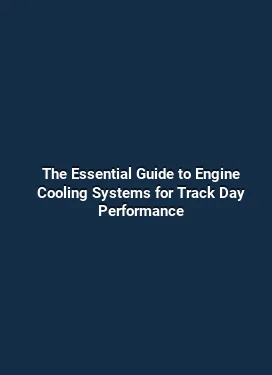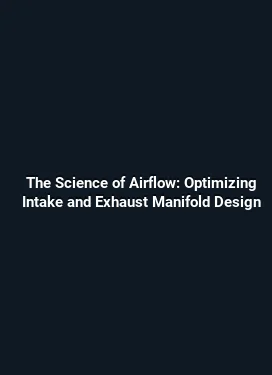Garrett GT3076R Turbo Kit Install on Nissan 350Z: Step by Step Guide
Overview of Garrett GT3076R Turbo Kit and Nissan 350Z Compatibility

The Garrett GT3076R stands as a prominent choice for drivers seeking a balance of strong midrange torque and high-end power. When paired with a Nissan 350Z, which uses the VQ35DE V6 in many markets, this turbo kit has the potential to unlock notable performance gains with the proper supporting systems. The GT30 series is designed to deliver efficient spool and robust airflow, enabling the 350Z’s engine to breathe more freely while maintaining reasonable turbo lag at street-lean RPM. Careful component sizing, precise exhaust management, and a calibrated fueling plan are essential to realizing reliable results on this platform.
Compatibility hinges on a combination of hardware fitment and supporting upgrades. The turbo kit typically requires attention to the exhaust manifold fitment, proper oil supply and return lines, intercooler integration, downpipe routing, and a tuned engine management strategy. Because the 350Z’s VQ-based architecture responds strongly to air flow and fueling precision, the installation path emphasizes clean piping, heat shielding, and robust connections rather than brute-force modifications. The result should be a firm boost curve with predictable response and a safe operating window when monitored with sensors and a quality tune.
Key Specifications of GT3076R and What They Mean for the 350Z

The GT3076R is a mid-size turbocharger featuring a compact twin-scroll inspired design with a capable flow rate for V6 platforms. It provides a broad torque band and a strong top-end power potential, especially when the engine is equipped with adequate fuel delivery, ignition control, and intercooling. For the 350Z, the emphasis is on ensuring the turbine housing and compressor map align with the engine’s displacement, RPM range, and altitude conditions. This means matching compressor size to fuel strategy, ensuring the intercooler can manage charge air temperatures under boost, and delivering a reliable oil supply to the bearing housing during sustained high-load runs.
From a practical standpoint, the GT3076R’s performance is realized through thoughtful packaging, heat management, and a data-informed tuning approach. The installation should aim for a steady spool around mid-range RPM, a consistent boost ramp, and lean but safe air-fuel operating windows. With these considerations, the 350Z can achieve meaningful improvements in acceleration, highway passing power, and overall drivetrain responsiveness without compromising engine longevity.
Pre-Installation Planning and Safety Considerations
Before lifting tools, it is essential to establish a clear plan that covers engine condition, supporting hardware, and the workflow for installation. The 350Z’s VQ-series engine benefits from a staged approach: verify mechanical integrity, prepare the fuel and ignition systems, and lay out the intercooler and piping plan. A well-defined plan reduces surprises in the engine bay and helps maintain a predictable schedule for fabrication, fitment, and calibration.
Safety and workspace readiness are non-negotiable. Ensure the engine bay is clean and accessible, disconnect the battery, and have a fire extinguisher within reach. Establish a solid work surface, proper stands, and a means to secure components during removal and reassembly. Documenting the stock configuration with photos can be invaluable when reassembling and aligning new parts. Planning for future maintenance, including easy access to the oil line connections and turbo mounted hardware, helps sustain long-term reliability after the install.
Assessing Engine Condition and Required Supporting Modifications
Begin with a careful health check of the engine and related systems. Perform a compression test to ensure consistent cylinder sealing and inspect for oil leaks around the valvetrain area. If the engine shows signs of excessive wear, address those issues or postpone the turbo upgrade until the engine rebuild or refresh is complete. A solid base ensures the turbo kit’s power is not squandered by underlying mechanical problems.
Key supporting modifications typically include upgraded fuel delivery, cooling, and engine management. Plan for higher-capacity fuel injectors and a lift pump or improved feed lines if needed. An efficient intercooler and robust heat shielding are crucial to keeping charge temperatures in check under boost. A calibrated engine management approach—whether through a standalone controller or a well-tuned ECU remap—helps translate the extra air into reliable, safe power. Finally, consider upgrading the exhaust system to support increased flow and to reduce backpressure within the turbo path.
Disassembly: Removing OEM Components for Turbo Kit Fitment
Disassembly starts with systematic removal of components that interfere with turbo fitment. The goal is to preserve as much of the stock architecture as possible while creating clean paths for new hardware. A clean workspace and careful labeling of parts and fasteners expedite reassembly and reduce the risk of misalignment during installation.
Begin with the removal of the factory intake tract, mass airflow sensor plumbing, and any heat shields obstructing access to the exhaust manifold area. Next, disconnect the wastegate control lines and any actuator connections, followed by detaching exhaust manifolds to free space for the GT3076R charger setup. It is common to relocate or modify the factory oil feed and return lines to accommodate the new turbo orientation. A comprehensive plan for preventing oil leaks and ensuring secure mounting is essential during this phase.
Tools, Workspace, and Safety Protocols
Assemble a complete tool kit including metric wrenches, socket sets, torque wrenches, pliers, cutters, and a hose clamp tool. A portable work light, magnetic trays, and a color-coded labeling system help keep parts organized. Safety goggles, gloves, and a respirator are recommended for handling metal cutting and cleaning solvents. Use a sturdy engine support stand or hoist if lifting components to avoid strain on the mounting points and to ensure precise alignment during reinstall.
Fabrication, Piping, and Manifold Fitment
With the factory components removed, the focus shifts to fabricating and routing the GT3076R’s plumbing. The most critical tasks are aligning the turbine outlet to the downpipe, routing the compressor discharge to the intercooler, and ensuring the oil feed and return lines are plumbed without interference. Fabrication quality directly affects boost response and reliability, so precise welds, clean cuts, and snug hose connections are essential.
Manifold fitment requires careful mounting and balanced exhaust routing to minimize heat soak and maximize plume efficiency. Precise flange alignment and secure mounting prevent leaks that can create performance dips or unwanted boost fluctuations. Heat management around hot piping is vital; heat shields and reflective wraps help protect nearby wiring and intake components from radiant heat that would otherwise degrade performance over time.
Managing Intercooler Piping and Charge Air Routing
Intercooler placement and piping paths should minimize bends and avoid tight radii that cause pressure losses. When possible, locate the intercooler in a position with direct airflow and short, smooth piping runs. Use silicone couplers and high-quality clamps rated for the operating boost to prevent leaks. For the 350Z, ensure piping clearance around the radiator, brake lines, and power steering components. A well-planned routing strategy reduces pressure drop, helps maintain predictable boost, and reduces the risk of boost creep at high rpm.
Fuel, Tuning, and ECU Considerations
Fuel system upgrades are fundamental to supporting the GT3076R’s airflow. Expect to add larger injectors and a capable fuel pump or upgrade the fuel supply lines to ensure stable fueling under boosted conditions. A clean and stable fuel supply is the foundation for a reliable tune, particularly as boost levels rise. In addition, upgrading or reprogramming the engine management system is essential to map the new air-fuel ratios, ignition timing, and boost target curves. A wideband oxygen sensor, data logging, and a dynamometer session are highly recommended to verify safe operation and to altitude adjust the boost response for different driving scenarios.
A practical tuning approach blends safe initial mappings with progressive dialing on a dyno. Start with a conservative boost target and gradually increase to the desired level while monitoring knock, exhaust gas temperature, and fuel trim. The goal is a healthy ignition window and a stable AFR under boost at various rpm and load conditions. If using a standalone ECU, ensure reliable sensor inputs from the manifold pressure sensor, cam/knock sensors, and idle air control to avoid spurious changes during operation.
Recommended Fuel System Upgrades and Tuning Strategies
Plan for injector sizing in the range appropriate for the target horsepower, typically in the higher-performance spectrum for the 350Z boosted setup. A fuel pump capable of maintaining consistent pressure and volume under boost is important, as is the proper selection of fuel pressure regulators and return lines. Tuning strategies should include a staged approach: verify fueling accuracy with idle and light-throttle mappings, then advance to racetrack-like load scenarios during dyno testing. Monitoring equipment such as wideband O2 sensors and exhaust gas temperature probes helps ensure the engine remains within safe operating limits as boost increases.
Installation Steps: Step by Step Procedure
Executing the installation in a structured order helps maintain alignment and minimizes rework. Start with a detailed check of all parts against the parts list, confirm fitment with dry runs, and prepare the bay for assembly with protective coverings and labeling.
Step by step guidance below emphasizes careful alignment, clean connections, and a methodical approach to torque and fastener sequences. The goal is to establish a reliable foundation for boost, ensure long-term durability, and achieve repeatable performance gains without compromising engine safety or comfort in daily driving conditions.
Step 1: Prepare the engine bay and gather parts
Organize the turbo kit components and mounting hardware. Inspect the turbine housing, compressor wheel, and all essential seals for signs of damage. Prepare the oil feed and return lines with appropriate heat shields and route them to avoid contact with hot exhaust paths. Ensure all hardware is clean, free of contaminants, and sized to the 350Z’s mounting points and engine bay dimensions.
Step 2: Remove intake and exhaust manifolds
Carefully disconnect electrical connectors, sensors, and vacuum lines that interface with the stock intake and exhaust manifolds. Remove the manifolds and set them aside to free space for the GT3076R installation. Take note of glove-friendly routing for any new lines that will replace or bypass the factory paths. Don’t rush the disassembly; double-check alignment of any sensor plugs that will need to be re-routed or reconnected after reassembly.
Step 3: Install turbocharger and manifold
Position the GT3076R in its designated location and secure the exhaust manifold with proper torque values. Verify flange alignment and ensure the turbine outlet aligns with the downpipe path. Fit the compressor outlet toward the intercooler side with minimal bends to reduce pressure loss. Install the oil feed and return lines, carefully routing them away from hot surfaces and moving components.
Step 4: Integrate intercooler and piping
Mount the intercooler in a high-flow position with direct air access. Route the charge pipes from the compressor outlet to the intercooler and then from the intercooler to the throttle body or intake manifold. Use smooth bends and avoid kinks to preserve flow. Secure all hoses with high-quality clamps and verify there are no clearance issues with the hood, radiator, or wiring harnesses.
Step 5: Fuel system and ECU tuning
Install the upgraded injectors and fuel pump, then route fuel lines to the rails with proper supports and heat protection. Reconnect the engine management system, ensuring sensors and actuators are mapped correctly for boost and airflow. Load a base map and perform a cautious initial idle test before progressing to higher boost on a dyno. Monitor AFR, ignition timing, and knock, adjusting the tune incrementally to reach the target performance while maintaining engine safety.
Step 6: Exhaust, boost control, and safety checks
Install the downpipe and any required exhaust components, ensuring a good seal and proper clearance. Fit a boost control device and verify the boost pressure is within the planned range. Recheck all connections, wiring, and ground straps. Perform a thorough leak check on the intake, intercooler, and oil lines. Lightly test drive at low loads to confirm smooth operation before a full power run on the dyno or track.
Testing, Break-In, and Maintenance
Post-installation testing focuses on confirming boost stability, airflow balance, and fuel integrity. A controlled break-in period allows the turbo to seat and the oil seals to acclimate to the new operating temperatures. During the first miles of boosted driving, monitor boost behavior, check for leaks, and verify that the engine maintains stable temperatures across different driving conditions.
Regular maintenance after a turbo installation is vital for reliability. Inspect the intercooler for any signs of oil intrusion or fouling, verify the integrity of all clamps and hoses, and ensure the oil supply lines are free of leaks. Scheduling periodic checks on the exhaust system, wastegate operation, and engine management map helps preserve performance gains while minimizing the risk of detonation or component wear over time.
Common Challenges and Troubleshooting
Anticipate issues such as boost leaks, unexpected sensor readings, or drivability changes after the install. A systematic approach to troubleshooting includes verifying all gasket surfaces, rechecking clamp torque, and confirming the alignment of the charge and exhaust paths. If a misfire or poor idle arises, review the fueling strategy, ignition timing, and vacuum line routing. A clean, data-driven diagnostic process will illuminate the root cause and guide corrective actions without unnecessary disassembly.
Addressing heat management and lubrication concerns is also critical. Ensure that the oil feed line maintains a consistent supply without air intrusion and that heat shields remain intact to protect nearby components. Keeping charge air temperatures in check helps maintain the turbo’s efficiency and reduces the likelihood of heat-induced performance degradation during aggressive driving scenarios.






